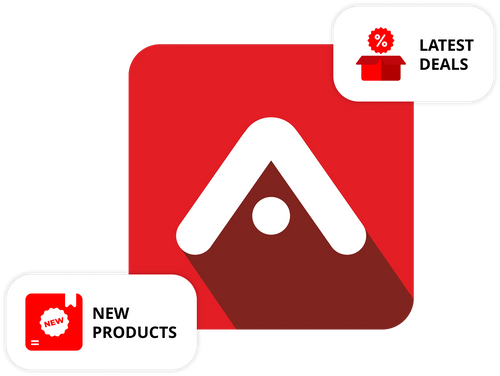
Top Sensors Changing Modern Industrial Automation
In today’s fast-changing industrial world, automation is the key to being efficient, productive, and safe. Behind the smooth operation of automated systems lies a network of advanced sensors, which play a critical role in gathering data, monitoring processes, and ensuring that machines operate within desired parameters. These sensors are very helpful for Industrial Automation, providing the foundation for intelligent decision-making and precise control. This blog explores into the essential role of sensors in industrial automation, exploring their types, functions, and impact on modern industries.

The Backbone of Industrial Automation: What Are Sensors?
At its core, a sensor is a device that detects changes in physical or environmental conditions and converts them into signals that can be measured, monitored, or acted upon. In industrial automation, sensors are essential to systems that require accurate and real-time data to function optimally. They are used in a wide range of applications, from monitoring temperature and pressure in manufacturing processes to detecting the presence of objects on a moving belt.
Sensors are the eyes and ears of automated systems. They gather information about the environment, machinery, and materials involved in production, allowing for precise control and adjustment. Without sensors, automated systems would be blind to changes, leading to ineffectiveness, errors, and potential safety hazards.
Types of Sensors in Industrial Automation:
The Variety of industrial applications has led to the development of various types of sensors, each designed to measure specific parameters. Here are some of the most commonly used sensors in industrial automation:
- Proximity Sensors: These sensors detect the presence or absence of an object without physical contact. They are widely used in manufacturing and assembly lines to monitor the position of objects on a moving belt, ensuring that machines operate smoothly and efficiently.
- Temperature Sensors: Critical in processes where temperature control is vital, such as in chemical manufacturing, food processing, and metalworking. Temperature sensors ensure that materials are heated or cooled within precise ranges, maintaining product quality and safety.
- Pressure Sensors: Used to measure the pressure of gases or liquids in pipelines, hydraulic systems, and other industrial processes. Pressure sensors are essential for maintaining safe operating conditions and preventing equipment damage or failure.
- Level Sensors: These sensors monitor the level of liquids, powders, or grainy materials in tanks and silos. They are crucial in industries such as food and beverage, medicines, and agriculture, where maintaining the correct material levels is vital for continuous operation.
- Flow Sensors: Used to measure the flow rate of liquids or gases in pipelines. Flow sensors are essential in industries like water treatment, oil and gas, and chemical processing, where accurate flow measurement is crucial for process control and efficiency.
- Optical Sensors: These sensors use light to detect the presence, position, or characteristics of an object. They are commonly used in quality control, packaging, and robotic systems, where precision and speed are necessary.
- Vibration Sensors: Used to monitor the health of machinery by detecting changes in vibration patterns. Vibration sensors help predict equipment failures, enabling protective maintenance and reducing downtime.
- Gas Sensors: Detect the presence of specific gases in the environment, often used in industries like mining, oil and gas, and chemical manufacturing to monitor air quality and detect leaks.
The Role of Sensors in Enhancing Efficiency and Productivity:

One of the primary benefits of using sensors in industrial automation is the enhancement of efficiency and productivity. By providing real-time data, sensors enable automated systems to make quick adjustments, optimize processes, and reduce waste. For example, in a manufacturing plant, proximity sensors can detect when a component is not correctly positioned on the assembly line, prompting the system to stop and correct the error before it leads to further issues.
Temperature and pressure sensors are also critical in maintaining consistent product quality. In industries like food processing or pharmaceuticals, where precise environmental conditions are essential, sensors ensure that processes are carried out within the required parameters, reducing the risk of defects or contamination.
Moreover, sensors contribute to energy efficiency by monitoring and controlling the operation of machinery. For instance, flow sensors can regulate the flow of fluids in a system, ensuring that pumps operate only when necessary, thereby conserving energy.
Sensors and Safety: Protecting Workers and Equipment:
Safety is a top priority in any Industrial environment, and sensors play a crucial role in protecting both workers and equipment. By continuously monitoring conditions, sensors can detect potential hazards and trigger safety mechanisms before accidents occur.
For example, gas sensors are important in industries where toxic or flammable gases are present. These sensors can detect even minute concentrations of dangerous gases, allowing for immediate action to prevent explosions or poisoning.
Vibration sensors are another critical safety tool, particularly in industries with heavy machinery. By monitoring the vibration patterns of equipment, these sensors can detect signs of wear or imbalance, alerting operators to potential mechanical failures before they lead to disastrous breakdowns.
Proximity sensors also enhance safety by preventing accidents involving automated machinery. These sensors can detect the presence of workers or objects in dangerous areas, stopping machines automatically to avoid collisions.
The Future of Sensors in Industrial Automation:
As technology continues to advance, sensors are becoming increasingly refined, offering even greater precision, reliability, and functionality. The integration of sensors with the Internet of Things (IoT) and artificial intelligence (AI) is opening up new possibilities for predictive maintenance, remote monitoring, and advanced process control.
In the future, we can expect sensors to play an even more central role in industrial automation, enabling smarter factories and more efficient production processes. With the continued development of wireless and miniaturized sensors, industries will benefit from greater flexibility and scalability in their automation systems.

 Request for Quotes
Request for Quotes
 Help Center
Help Center




































































